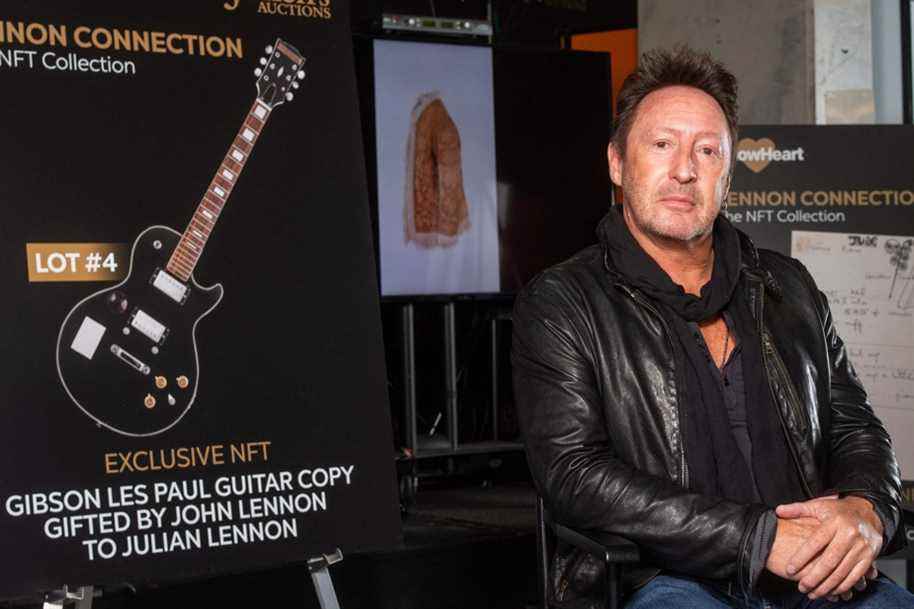(Beverly Hills) An auction of Beatles memorabilia in the form of NFTs, certified virtual works, organized by Julian Lennon in Los Angeles won more than $158,000 on Monday, the auction house Julien’s Auctions announced.
Posted at 5:35 p.m.
Centerpiece of the first lots put up for sale by John Lennon’s son via Californian house Julien’s Auctions on February 7, the NFT version of the song’s handwritten notes Hey Jude exceeded estimates, going under the hammer at $76,800.
Originally titled Hey Julesthis Beatles song was written in 1968 by Paul McCartney to comfort Julian Lennon, then five years old and who was living very badly the separation of John Lennon from his mother Cynthia.
The NFT version of these notes is presented as an animation where the words are gradually inscribed on the page and is accompanied, like each of the other lots, by an audio commentary by Julian Lennon situating the object in its historical and sentimental context.
“For me, it’s not enough to just look at an image if I’m a buyer. So I wanted to add something a little more personal, to tell a little story that relates to the image,” explained Julian Lennon.
The artist was also selling an NFT of the Afghan coat worn by his father on the set of Magical Mystery Tourgone at 22,400 dollars just like a guitar offered by John Lennon to his son for Christmas, a price four times higher than its initial estimate.
Part of the proceeds from this sale, organized by Julien’s Auction and the company YellowHeart, specializing in musical NFTs, will go to the foundation created by Julian Lennon to be invested in the capture of CO2 atmosphere in order to curb global warming.
Julian Lennon has plans to sell other NFTs from his collection through Julien’s Auctions, but has no plans to physically part with his memorabilia. ” No chance ! It represents 30 years spent collecting objects that are very, very personal. And you know, I haven’t had so many things from dad, so I cherish them, ”explains the artist with emotion.
NFTs (for “non-fungible tokens”) are certificates of authenticity associated with a virtual object which they thus make unique. Virtually unknown for a year, they represent for some the new goose that lays the golden egg on the contemporary art market.
